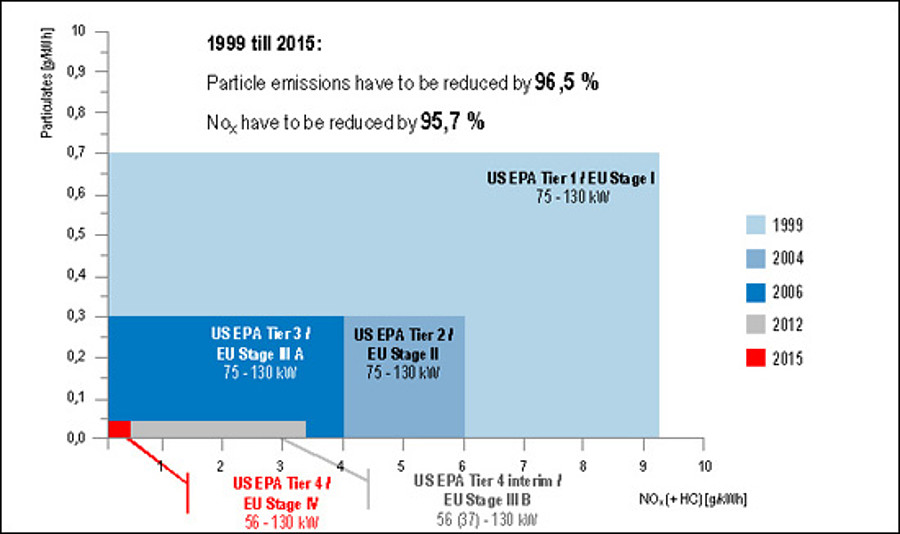Challenges are what drives us.
One of the great challenges facing the diesel engine manufacturers is the implementation of the future exhaust emission laws. Regulations for the systematic reduction of pollutant concentrations in the exhaust gases of diesel engines have been introduced in Europe and the USA since 1996.
Air contaminating substances caused by the combustion of fossil fuels are responsible for a number of negative influences on the environment and health, for example acid rain, smog and greenhouse gases which are seen in connection with global warming and respiratory complaints.
The exhaust gases of diesel engines consist primarily of water, NOx, CO, HC, PM and CO2.
NOx: Nitric oxide: A combination of nitrogen monoxide NO and nitrogen dioxide NO2 which contributes to smog and is a major factor in the development of acid rain, when fuels with a high sulphur content are used.
CO: Carbon monoxide: A tasteless, odorless and toxic gas produced at high engine combustion temperatures or when too little oxygen is available during combustion.
HC: Hydrocarbons: A result of both complete and incomplete fuel combustion, and occurring as many different pollutant varieties. Its primary byproducts in the diesel engine are carbon dioxide, water or carbon monoxide and carbon (soot) among other things.
PM: Particle emissions are a complex part of diesel emissions byproduct. Its main components are metal attrition particles from the engine, carbon (soot) and hydrocarbons from fuel and lubricating oil, as well as watery sulphuric acid produced from sulphur in diesel fuel.
CO2: Carbon dioxide: Familiar as greenhouse gas. The CO2 emission values of diesel engines are below those of petrol engines.
The topic of exhaust emissions regulation and reduction is extremely complex. Increasingly profound measures in the engine design, fuel injection, fuel combustion and ignition technology and the use of exhaust aftertreatment are necessary to maintain permissible emissions limits.
After successfully implementing the initial stages of the European and US exhaust emissions reductions, DEUTZ has now turned its attention to the future European and US exhaust stage 4. This is the greatest challenge facing modern engine manufacturers to date and will segue the application of further technology modules.
The basic philosophy of DEUTZ: Technical modifications to engine design and complexity will only be implemented where necessary for the safe execution of legal provisions or customer requirements. In the meantime, we will keep our sights set firmly on the economy and reliability of the diesel engine.
Emission legislation


